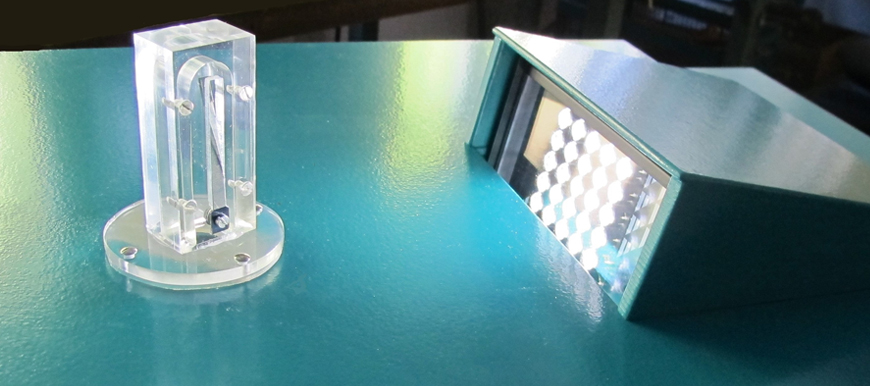Application area:
The lfM-Institute for Music Instruments e.V., Zwota (lfM) is an application-oriented research and service-providing organisation for companies, factories and craftsmen specialising in the fields of accoustic/vibration technolgy, materials and technologies. The focus of the work of the institute, which was founded in 1951, has traditionally been musical acoustics with the objective of describing the sound and playing effects of design, material usage and manufacturing technology.
An increasing number of alternative or modified wooden materials as well as sustainability, ergonometric and health protection are now becoming more and more important. In addition, the scope of activities also includes electro-acoustic and metrological investigations in low refective areas.
Task:
For a local museum, the task was to develop a demonstration model for an oscillating accordion reed to expand its exhibition of lfM. The museum visitors should be shown optically, how to achieve sound inside accordions, harmoniums and harmonicas.
Solution:
The most important elements for the creation of sound in these instruments are the so-called “beat-through” reeds. The image shows an accordion air-channel made of acrylic, called a channel. On the inside of the channel, there is usually a reed made of spring steel which is riveted on. Due to the suctional effect of the airstream, it is pulled into the channel. The tense reed snaps back due to its spring force and passes by the original position. This process starts again. Hence the reed swings back and forth and separates the air flowing through in thrusts – a sound is created. Due to the high reed frequency, it is only possible to make the oscillating process visible by using stroboscope light.
The use of the stationary version of our stroboscope, the RT STROBE qbLEDs makes it possible to set the flashing frequency so that the reed only appears to move in slow motion. The adjustable brightness allows the stroboscope to be adapted to the ambient light conditions.

